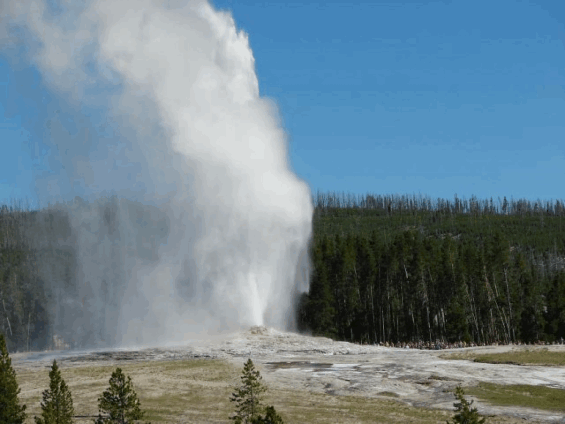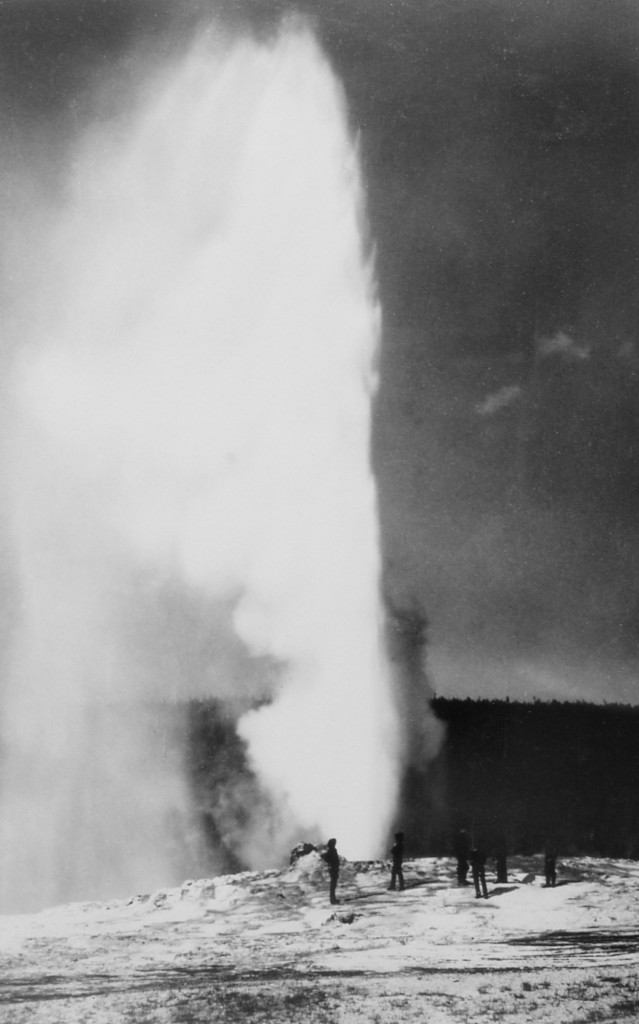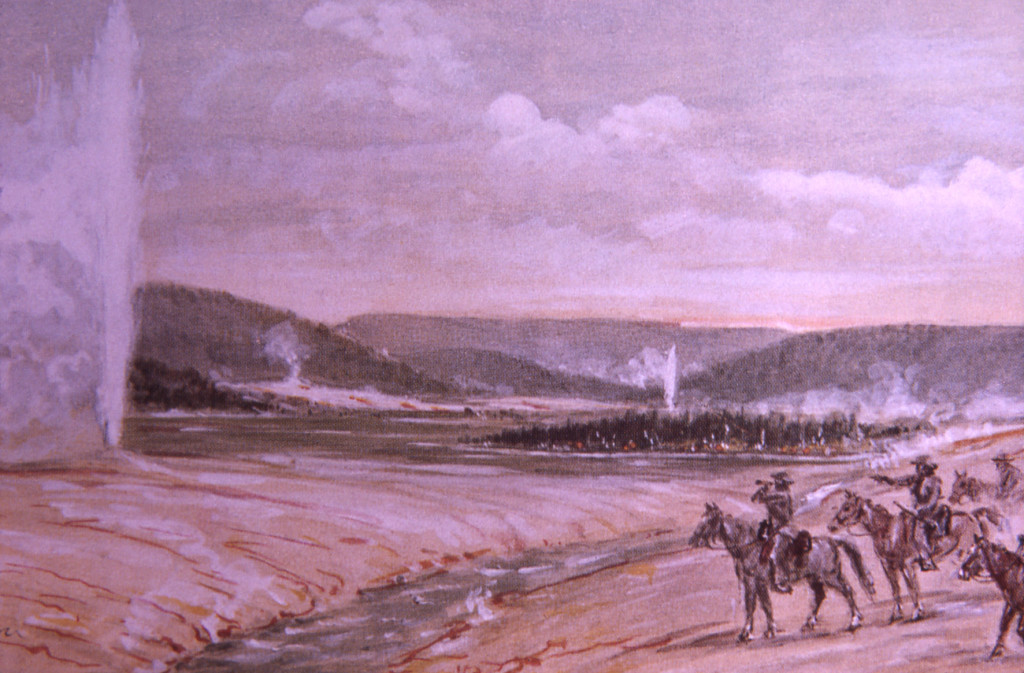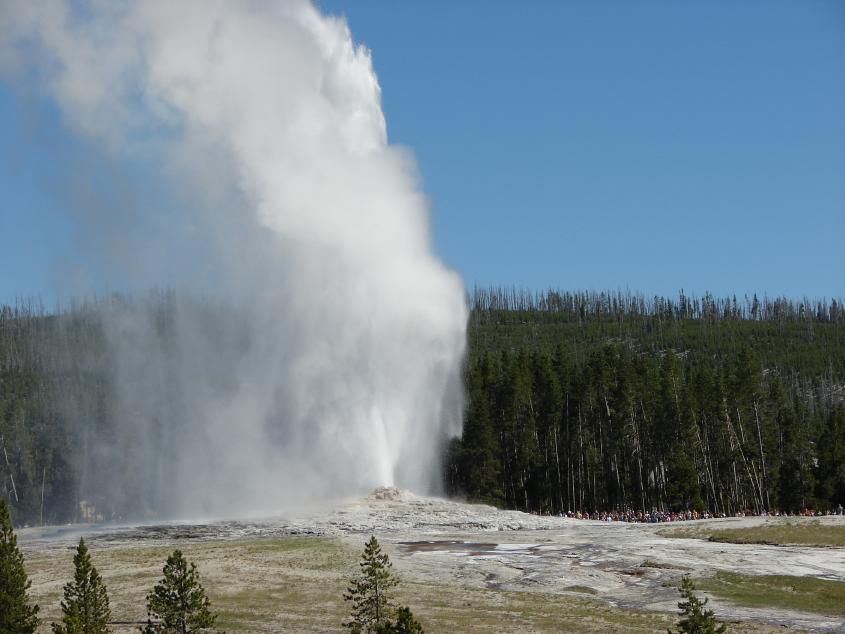It is not the largest geyser in Yellowstone National Park. It is not the flashiest geyser either. But it is the most faithful geyser in the Park.
Old Faithful has been entertaining visitors to Yellowstone National Park for over 140 years. With its characteristically tall and feathery plume of steam and boiling water, Old Faithful leaves an indelible impression on visitors who have come from all over the globe to see it. Indeed, it is so tall, you can see it from the Grand Loop Road, going to or coming from West Thumb near the Kepler Cascades.
Old Faithful erupts in relatively reliable intervals (44 to 125 minutes apart) or 90-92 minutes on average. Its height has been recorded between 90 and 184 feet. Generally, the longer an eruption lasts, the longer the interval between them lasts.
What makes Old Faithful so remarkable is not only its current constancy, but its historic constancy as well. The name “Old Faithful” dates back to the Washburn–Langford–Doane expedition of 1870. Nathaniel P. Langford recounts in his diary of the expedition:
We gave such names to those of the geysers which we saw in action as we think will best illustrate their peculiarities. The one I have just described General Washburn has named ‘Old Faithful,’ because of the regularity of its eruptions, the intervals between which being from sixty to sixty-five minutes, the column of water being thrown at each eruption to the height of from eighty to one hundred feet (108).
Mr. Langford’s claim in the diary (published in 1905) was a conservative one. In “The Wonders of Yellowstone,” an account of the expedition published in two parts in Scribner’s Monthly (May & June 1871) he bolsters his description of Old Faithful, describing the plume as taller and makes the eruption more of an event. It’s quite a scene: in the Scribner’s account, upon sighting the geyser, the expedition spurred their “jaded horses” up to the “wonderful phenomenon” of Old Faithful. Langford even says, “It was indeed a perfect geyser:”
This geyser is elevated thirty feet above the level of the surrounding plain, and the crater rises five or six feet above the mound. It spouted at regular intervals nine times during our stay, the columns of boiling water being thrown from ninety to one hundred and twenty-five feet at each discharge, which lasted from fifteen to twenty minutes. We gave it the name of ‘Old Faithful’ (123).
While it was Langford who made Old Faithful come alive in print, it was the work of two artists—painter Thomas Moran and photographer William Henry Jackson—who helped bring its image back east. Members of the Hayden Geological Survey of 1871, Moran and Jackson captured the majesty of Old Faithful in different ways: Moran with his effusive watercolors, Jackson with his stunning photography.
Old Faithful has continued to be a huge draw for visitors over the years, especially in the 20th century. Several Haynes Guide editions (named for Frank Jay Haynes, who took numerous pictures of the Park, most famously in the 1880s) used Old Faithful as their cover art.
The Old Faithful depicted in these images and described in print is the same geyser millions visit today. To see Old Faithful erupt is to see a part of American history reenacted.
 Yellowstone Insider Your Complete Guide to America's First National Park
Yellowstone Insider Your Complete Guide to America's First National Park




You must be logged in to post a comment.